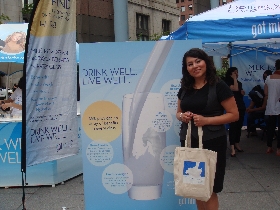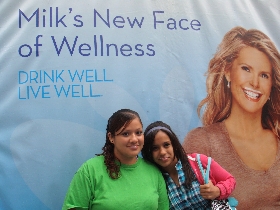Swine Flu Survival Kit Prepares Consumers for Flu Season
Consumer Reports shows how to avoid drugstore traps, and which remedies are most effective
As the U.S. prepares for a possible second wave of H1N1 or swine flu, as well as for the annual scourge of seasonal flu and colds, a new report from Consumer Reports helps households prepare for, prevent, and treat cold and flu symptoms safely and effectively, including recommendations for what to pack in an emergency kit for a flu outbreak. The report is available in the September 2009 issue of Consumer Reports and online at http://www.ConsumerReportsHealth.org/.
How to Prepare a Swine Flu Survival Kit
In case the second wave of swine flu is severe enough to warrant home confinement, consumers should pack an emergency kit in advance. You will need:
- A two-week supply of food and water.
- Fever reducers, such as acetaminophen, ibuprofen, or naproxen.
- Cough and cold medications containing chlorpheniramine, diphenhydramine, oxymetazoline, and pseudoephedrine and lozenges with dyclonine, glycerin, or honey can help ease symptoms.
- Electrolyte drinks, such as Gatorade or Powerade, to keep you hydrated.
- Hand sanitizer with at least 60 percent alcohol, such as Purell, to kill viruses when soap and water aren’t available.
- Surgical masks with an FDA rating of at least N-95 to help prevent spreading the flu. Masks need to be replaced often and disposed of after use.
For all emergencies, Consumer Reports recommends packing at least three days worth of nonperishable food; at least one gallon of water per person, per day; a first-aid kit that includes any prescription or over-the-counter medications your family might need; as well as antihistamines for allergic reactions, pain relievers, stomach and antidiarrhea remedies, and antacids.
The government is currently preparing a vaccine against the swine flu that will likely be recommended for school-age children and other high-risk individuals, such as pregnant women, those with chronic illness, and those who live or work with infants, preschoolers, or older adults. In the meantime, Consumer Reports recommends that everyone – but especially high-risk people – get vaccinated against regular, seasonal flu before December when that infection usually arrives.
“This could be an especially big year for flu, so people need to take every precaution and double their efforts to safeguard their families,” says Joel Keehn, senior editor, Consumer Reports. Even when the vaccine doesn’t prevent seasonal flu, it often lessens its symptoms. In terms of treatments, certain antiviral drugs can not only ease symptoms of seasonal flu but also shorten its duration and possibly prevent complications as well. Some of those drugs probably help against swine flu too. Antivirals work best if taken early on in the illness, so it’s best to take them at the first sign of symptoms.
Brands to Buy and Brands to Skip
Also in this issue, in a side by side comparison, Consumer Reports identifies the Consumer Reports Best Buy Drug choices to treat eight common conditions, including Attention Deficit/ Hyperactivity Disorder (ADHD), heartburn, and insomnia that can save consumers hundreds or even thousands of dollars a year. For example, consumers who need to lower their LDL (“bad”) cholesterol by less than 30 percent can save nearly $1,000 a year by taking lovastatin, a generic statin, instead of taking Lipitor, a more expensive brand-name drug. Launched in December 2004, Consumer Reports Best Buy Drugs is a public health initiative that rates more than 200 prescription drugs using comparative effectiveness research. Best Buy Drugs reports are available for free at www.ConsumerReportsHealth.org/BestBuyDrugs. By opting for Best Buy Drug choices, consumers can realize significant monthly savings while receiving the most effective and safest treatments for their condition.
As the new school year approaches and weed pollen allergen levels peak, Consumer Reports also lists other useful information for treating colds and allergies without medication. For colds, the best remedies are the simplest and can often be found in your kitchen, not a drugstore. For example, you can soothe a sore throat with a saltwater gargle, or try honey or non-medicated lozenges for a cough. Controlling allergies starts by limiting exposure to the triggers, keeping windows shut when outdoor triggers are high, and using an air conditioner or a dehumidifier to reduce humidity. To treat allergy symptoms with over-the-counter drugs, Consumer Reports recommends using generic versions of Claritin and Zyrtec – loratadine or cetirizine.
Avoiding Hidden Drugstore Traps
No matter your ailment, consumers need to watch out for the following traps at the drugstore when shopping for remedies:
- Brand-name extensions. Drug manufacturers often use brand names to launch related but different products. There are 34 Vicks products and 14 Sudafed products, and countless store brands and generic versions. With so many products to choose from, people might take medications that are inappropriate or even risky.
- Recommendation: Choose remedies by active ingredients, not the brand.
- “Shotgun” remedies. Many products are loaded with multiple ingredients to blast several symptoms at once. That’s a misfire, since some added ingredients can increase risks, and any ingredient that treats a symptom you don’t have is unnecessary. Such products can increase the risk of overdoses if you take multiple medications.
- Recommendation: Opt for medicines with just one active ingredient.
- Prescription drugs that became over the counter (OTC). Direct access to medication can introduce new risks if people turn to them when simpler remedies would suffice or if they treat problems without a doctor’s diagnosis.
- Recommendation: Before trying a drug that has become available over the counter, talk with your doctor to make sure that it’s right for you, that you need it, and that the condition doesn’t require medical supervision.
SEPTEMBER 2009
The material above is intended for legitimate news entities only; it may not be used for commercial or promotional purposes. Consumer Reports(R) is published by Consumers Union, an expert, independent nonprofit organization whose mission is to work for a fair, just, and safe marketplace for all consumers and to empower consumers to protect themselves. To achieve this mission, we test, inform, and protect. To maintain our independence and impartiality, Consumers Union accepts no outside advertising, no free test samples, and has no agenda other than the interests of consumers. Consumers Union supports itself through the sale of our information products and services, individual contributions, and a few noncommercial grants.
Source: Consumer Reports



